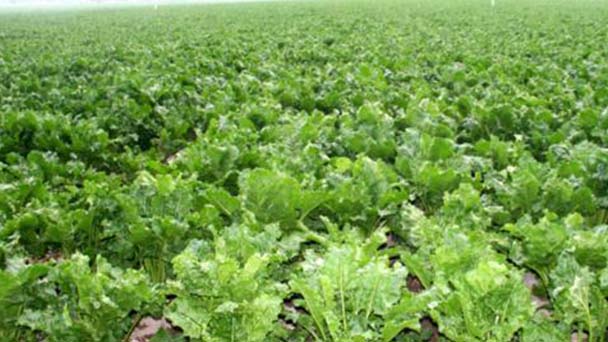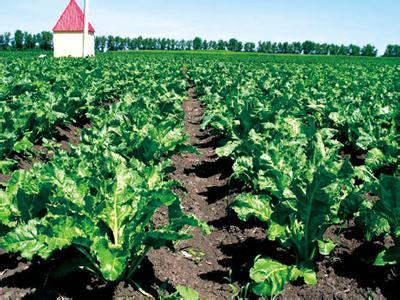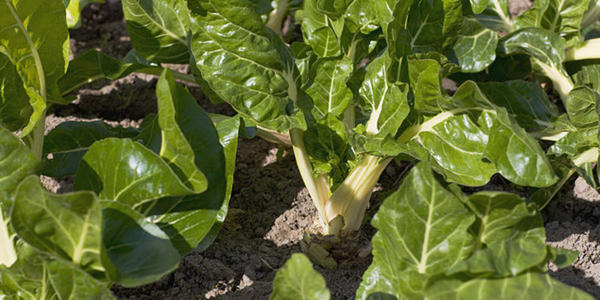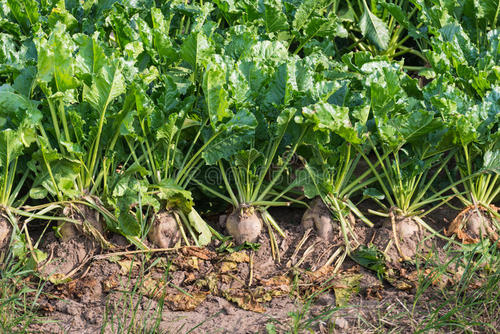Beet profile
Written by Maggie
Jan 27 2021

Beet, the scientific name Beta vulgaris, is a biennial herb. Native to the western and southern coasts of Europe, from Sweden to Spain, China is mainly distributed in Xinjiang, Heilongjiang, Inner Mongolia and other places. Beet is a warm-loving crop, but strong cold tolerance. Beet grows well on deep, soft soil rich in organic matter.
Beet picture

Morphological characteristics of Beet
Beet (Beta vulgaris) is a biennial herb, roots conical to fusiform, succulent. The stem is erect, more or less branched, ribbed and striped.
Basal leaves are oblong, 20 -- 30 cm long and 10 -- 15 cm wide, petiolate long, flattened and slightly shiny above, with stout convex veins below, entire or slightly undulate, apically obtuse, base cuneate, truncate or slightly cordate; Petiole of Beet is stout, convex below, flat or slotted above; Cauline leaves are alternate, smaller, ovate or lanceolate moment round, apex acuminate, base tapering into the short stalk.
Beet (Beta vulgaris) flowers are 2-3 clusters, perianth base connate with each other when fruited; Perianth lobes are strip or narrowly rectangular, leathery and inwardly arched in fruit. Utricle inferior sunk into scleroid perianth, distally slightly fleshy. Seeds of Beet are biconvex, 2-3 mm in diam., reddish-brown, lustrous; Embryo is annular, pale; Endosperm is powdery, white.
Origin and habitat of Beet
Beet (Beta vulgaris) is native to the western and southern coasts of Europe, from Sweden to Spain, China is mainly distributed in Xinjiang, Heilongjiang, Inner Mongolia and other places.
Beet is a warm-loving crop but has strong cold tolerance. High soil fertility, deep soil layer, good structure, strong fertility and water retention ability, and convenient irrigation conditions are the basis for obtaining high yield and high sugar content. Beet grows well in deep, soft soil rich in organic matter, and is effective when applied with fertilizer and manure.
Beet propagation methods
Seed selection: choose after examination and approval of the seed Beet varieties, quality meet the national award of second class above the standard of high yield, selects the high quality, high yield, strong resistance, good commercial, the high sugar content of polyploid varieties, sowing before sun 2-3 days, to improve the germination rate, and drug treatment, a sulfur ring with methyl p 1 match into liquid water 50 grams, immerse 50 kilograms of Beet seeds, soaking for 24 hours, will cure seedling pests.
Sowing at the right time: for 5 consecutive days, the average ground temperature for Beetin the 5cm soil layer is stable. Sowing can be done at 5℃, and the amount of sowing is 15 kg per hectare. Due to the small size of Beet seeds, it is necessary to strictly control the sowing quality under the fine condition of soil preparation. After sowing Beet, the soil is tightly covered and the depth is consistent. As far as possible, the precise sowing is adopted, the grain spacing is uniform, and the sowing depth is 3-5 cm. Plant spacing should be 25-28 cm, with 525-60 000 seedlings per hectare.

Beet growing methods
1. Growing environment
Beet (Beta vulgaris) grows well in containers and green leaves can also be enjoyed as a potted flower to add a touch of green to the home.Beet like sunny places, and it is not recommended to plant Beet if the balcony is shaded.
2. Seeds
The seeds of Beet (Beta vulgaris) germinate slowly and can be soaked in warm water for about four hours before sowing It is important to note that Beet needs to be sown at a warmer temperature. Northern food lovers can wait for heating before sowing.
3. The light
The Beet (Beta vulgaris) needs a sunny environment to grow, so we need to put it on the edge of the balcony so that it can see the most sunlight in the winter, and only when there is enough photosynthesis can the Beet grow stronger underground.
4. Water
Beet (Beta vulgaris) needs a lot of water to grow, and we need to keep the soil moist rather than wet. After all, water is the carrier for transporting nutrients, and only when water is in place can nutrient transport keep up.
5. Harvest
After the Beet (Beta vulgaris) comes out of the roots, we can pick the Beet.When collecting Beet, we should be careful not to break the skin on the roots of the Beet, otherwise it will not be easy to store. We can keep the roots in a dry place. If we wrap the root in a plastic bag and put it in the refrigerator, it can keep fresh for two weeks.
Prevention and control of diseases and pests of beet
In the early growth stage of Beet, a brown spot is likely to occur if there is too much rain or too much humidity in the field, which can be prevented by frequent tillage and soil loosing. After the ridges are closed by Beet, insecticide control can be adopted, and 100 grams of methyl tobuzine plus 50 grams of carbendazim and 30 kilograms of water can be sprayed on mu. In summer, in case of high temperature and drought, powdery mildew prone to occur in the field, available powder rust Ning 70 grams per mu of water 30 kg early prevention.
The main value of Beet
Beet (Beta vulgaris) is an important cash crop and one of the main sugar crops in China. In addition to sugar production, the byproducts of Beet have high comprehensive utilization value. If molasses is fermented or processed by chemical methods, it can produce methanol, ethanol, butanol, glycerol, monosodium glutamate and acetone. Beet can also be used as the raw material of many pharmaceutical and light industrial products such as adenosine triphosphate, aureomycin, vitamin B complex, protein yeast and citric acid. After sugar processing, the filter mud is rich in calcium and other nutrients, which can not only be used as fertilizer but also neutralize the free acid in the soil. Beet stems and leaves, green heads, tail roots and Beet pulp can not only be used as raw materials for brewing and extracting Beet alkali, but also be high quality and juicy feed.

Latest Updated
- Benefits of Bugleweed - 7 Science-backed Health Benefits
- Bugleweed Dangers & Side Effects - Is It Poisonous?
- How to Plant Evergreen Trees - What You Should Know
- When to Plant Evergreens - Grow Guide for Evergreen Trees
- 12 Wonderful Evergreen Shrubs for Your Garden
- 12 Popular Evergreen Plants with Pictures for Beginners
- When And How To Prune A Lilac Bush Like a Pro
- How to Grow & Care for Lilac Vine (Hardenbergia Violacea)
- Japanese Lilac Tree (Syringa Reticulata) Care & Propagation Guide
- Shumard Oak Pros and Cons - What to Know
Popular Articles
- Winter maintenance of Antirrhinum Majus
- How to Grow Terminalia Mantaly Tree
- How to Grow and Care for Crossostephium Chinense
- How to grow Antirrhinum Majus in spring
- Peristeria Elata (Dove Orchid) Profile: Info & Care Guide
- Underwatered Snake Plant (Sansevieria Trifasciata) - Signs And How To Fix
- How to Care for Brazilian Jasmine Plant (Mandevilla Sanderi)
- How to Grow & Care for Graptopetalum Purple Delight in Summer
- Rosa Chinensis (China Rose): Plant Growing & Care Tips
- How to Care for Baby Sun Rose (Aptenia Cordifolia)